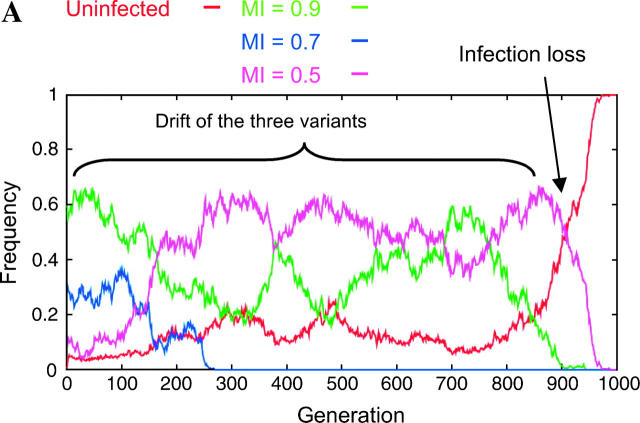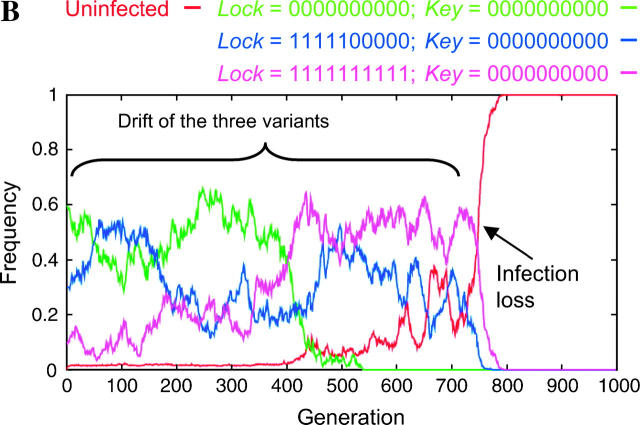Figure 4.—
The neutrality of MI and lock variations and their possible consequences on infection loss. Population size Ne = 1000. (A) The consequences of MI polymorphism. The three variants (MI = 0.9, 0.6, and 0.3) are initially introduced with respective frequencies 0.6, 0.3, and 0.1. The other parameters are not polymorphic: TE = 0.9, FE = 1, lock = 1111111111, key = 1111111111. Uninfected individuals rapidly reach the frequency expected on the basis of these parameters values. As expected from earlier analysis (Prout 1994; Turelli 1994), the frequencies of the three variants change through drift. These random changes affect the frequency of uninfected individuals, which increases as variants with low MI get more frequent through drift. After generation 900, the respective frequencies of the three variants are such that the unstable equilibrium value gets above the overall infection frequency, leading to the loss of Wolbachia. (B) The consequences of lock polymorphism. The three variants (lock = 1111111111, 2222211111, and 2222222222) are initially introduced with respective frequencies 0.6, 0.3, and 0.1. The other parameters are not polymorphic: MI = 0.9, TE = 0.9, FE = 1, key = 1111111111. Uninfected individuals rapidly reach the frequency expected on the basis of these parameters values. The frequencies of the three variants change through drift. These random changes affect the frequency of uninfected individuals, which increases as the two variants with a lock sequence different from 1111111111 get more frequent through drift. After generation 700, the respective frequencies of the three variants are such that the unstable equilibrium value gets above the overall infection frequency, leading to the loss of Wolbachia.


